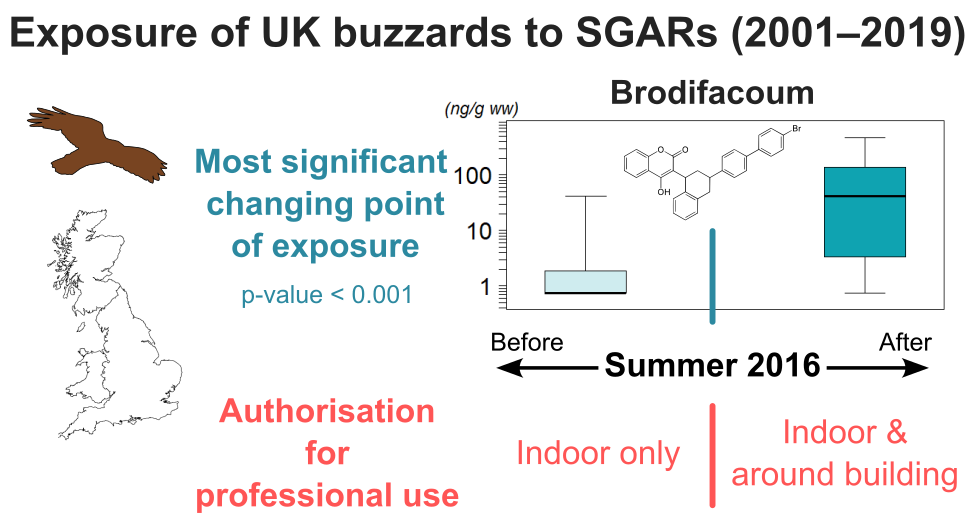A new paper has been published as an output of the EU Life Apex project involving the analysis of samples provided by the PBMS.
The paper focuses on the relationship between exposure pattern of wildlife to second-generation anticoagulant rodenticides (SGARs) and regulatory changes.
SGARs are widely used to control rodent pest populations, but their use results in serious secondary exposure of wild predatory animals. In the United Kingdom (UK), there are five SGARs currently used: two less potent SGARs (bromadiolone and difenacoum) and three more toxic ones (brodifacoum, flocoumafen, and difethialone). The professional use and purchase of SGARs were revised in the 2010s, and the use of these three highly toxic SGARs outdoors around buildings has been authorised for controlling rodent populations with resistance to anticoagulants. However, it is still uncertain whether and how these regulatory changes have influenced the secondary exposure of birds of prey to SGARs.
This research assessed the temporal trend of exposure to SGARs and a possible relationship between the temporal trend and the regulatory changes, based on biomonitoring of common buzzard (Buteo buteo) collected from 2001 to 2019 across the UK. The findings indicate a possible shift in the SGAR use after the regulatory changes that possibly pose higher risks of impacts on wildlife.

- See the full text of the paper
- See all of our papers
- More information about the EU Life Apex Project